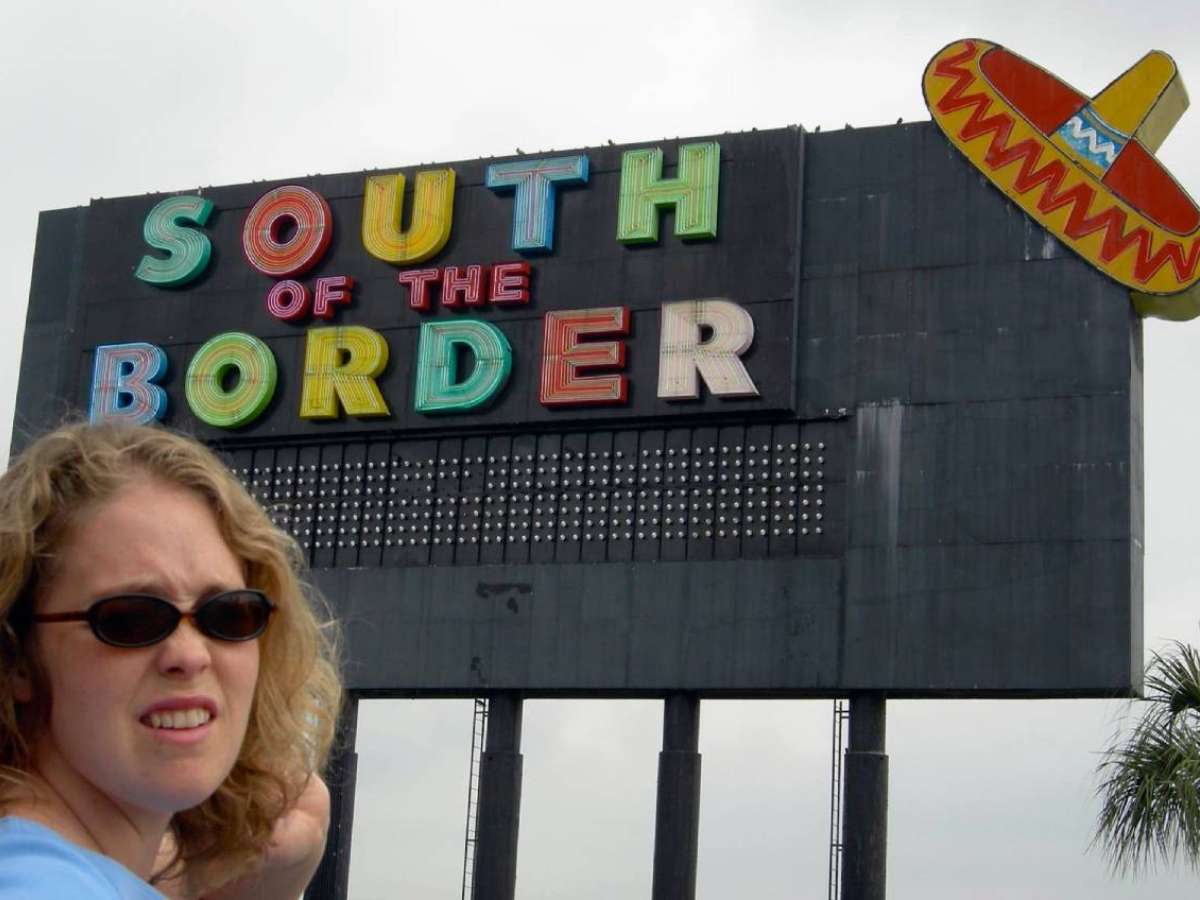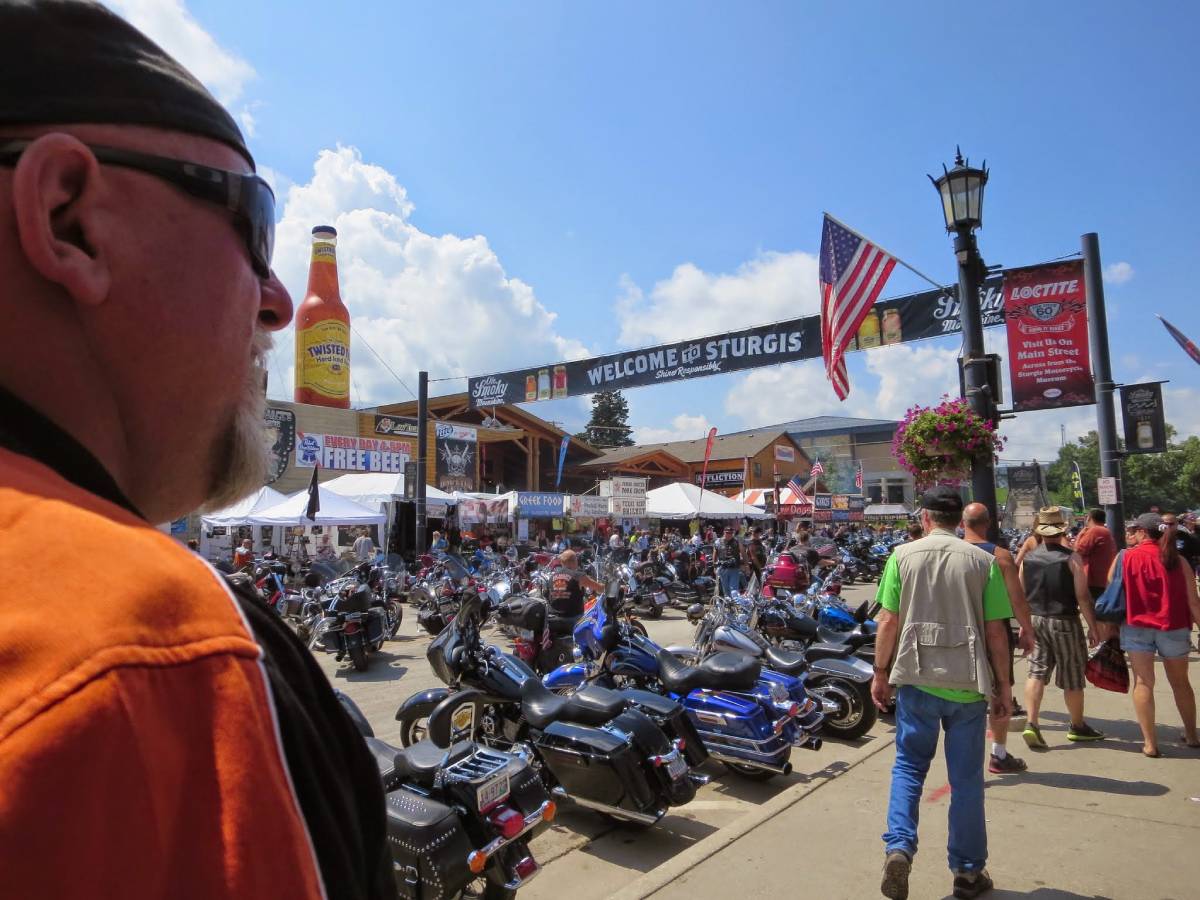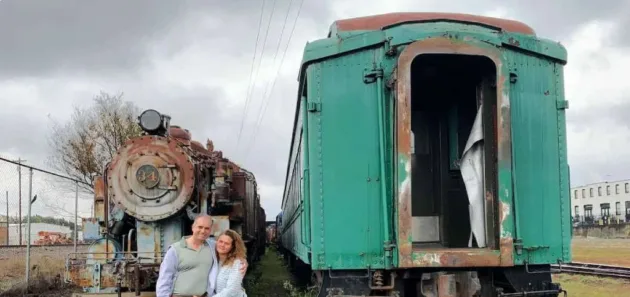
When my wife and I temporarily relocated to Roanoke, Virginia and were looking for things to see and do there, one of the top attractions everyone recommended was the Virginia Museum of Transportation.
All the signs were telling us to check it out… And I mean literally!
Along nearby Interstate-81 in the Roanoke-Salem area, many of the brown highway signs (which point to recreational areas, museums, and landmarks) showcase the Virginia Museum of Transportation.
Let me tell you that the Virginia Museum of Transportation is certainly worth the visit!
Things To See & Do At The Virginia Museum Of Transportation
The minute you walk into the transportation museum in Roanoke, you’re greeted by an old-fashioned traffic signal hanging above with green, yellow, and red lights in the main vestibule.
I thought that was pretty cool…
So is the massive model railway layout in the first room as you enter the first hall of the museum across the ticket window.
…And this is just the beginning!
Step just beyond the model railway and you enter a gallery filled with classic cars, trucks, bikes, and even race cars.
It’s not just the immaculately preserved old cars that I found fascinating…
The vintage Yellow Cab, Overnite Transportation and VW signs added a distinctive touch of roadside nostalgia.
A mockup of a 1920s auto garage — complete with old cans of oil, classic tools and a period truck on a lift — show how some of these classic cars may have been repaired back in the day.
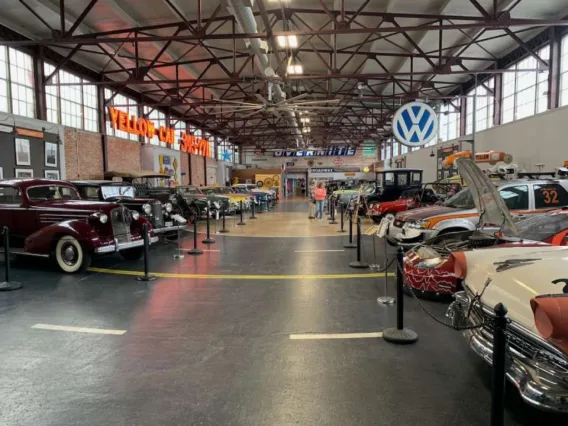
Walking back through the classic car wing to the center of the museum we come across a subject that I haven’t seen covered in much depth at any museum I’ve visited before: bus transportation.
Lo and behold, there’s a whole area of the museum dedicated to buses — including different makes and models of bus, the major carriers, and bus history in Virginia.
I was also quite enamored with the many vintage toy buses displayed throughout this wing.
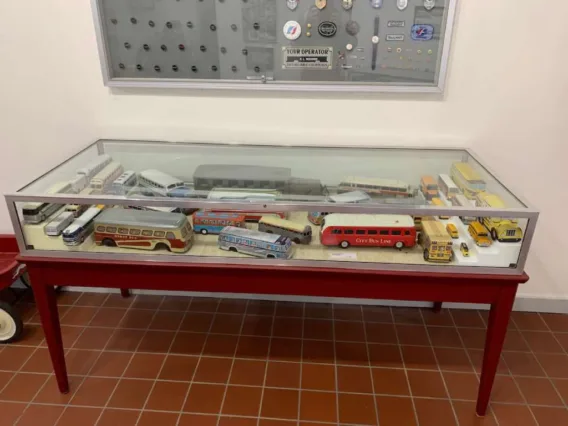
Next up are the trains — they’re one of the main stars at the Virginia Museum of Transportation.
Now you may wonder why trains figure so heavily into the museum (and I’ve just barely scratched the surface of what this place has)… But if you understand something about Virginia history and particularly the backstory of Roanoke, where this museum is located, it will make more sense.
You see, the railway was a major economic engine for Virginia during the latter decades of the 1800s and going into the 1900s.
Several major rail companies built railroads right through Virginia.
One of these was the Norfolk and Western Railway, which built their headquarters in the small Virginia village of Big Lick — named for the numerous salt outcroppings that drew animals to the Roanoke River.
But you won’t find the village of Big Lick on any maps today…
Nope. When the Norfolk and Western Railway came into Big Lick, bringing with it a confluence of rail lines going every direction and tenfold growth in population, the people of the booming town wanted to change the name to something more appealing than “Big Lick.”
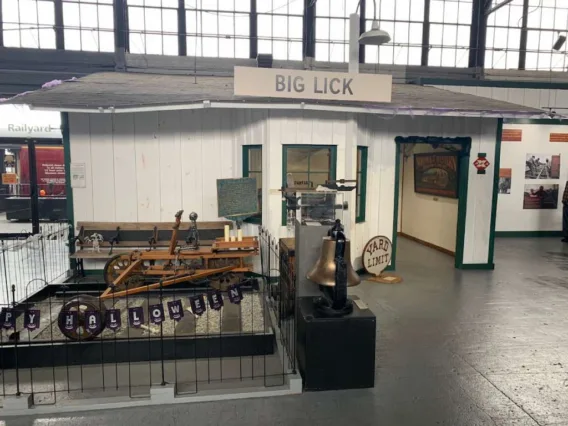
It was decided in 1882 that the town’s new name would be Roanoke.
Roanoke is a Powhatan word meaning “white beads made from shells” — something used as money by many indigenous Chesapeake-area peoples.
The Norfolk and Western Railway continued with that name until June 1982, when it became known as the Norfolk Southern Corporation.
We’re going to see a bunch more trains before we leave the museum, but the next wing really leaves you feeling high — high in the sky, that is.
It’s time to take a trek through the region’s aviation history, and there’s a lot of it on display here at the museum in Roanoke!
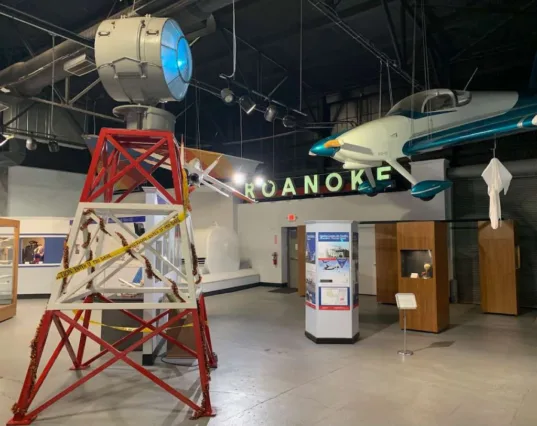
The Roanoke-Blacksburg Regional Airport dates back to 1929, when the fledgling airport soon fielded a single hangar and two dirt runways.
Over time, the airport grew in size and stature. Jets arrived in the 1960s, and by the early 1980s Piedmont Airlines had brought nearly 9 out of 10 passengers through this airport. The current terminal was built in 1989 — and today hundreds of thousands of people travel through the airport each year.
After you’ve made your rounds inside the museum, it’s time to take a step outside — where the grand iron horses of yesteryear call for you to come aboard!
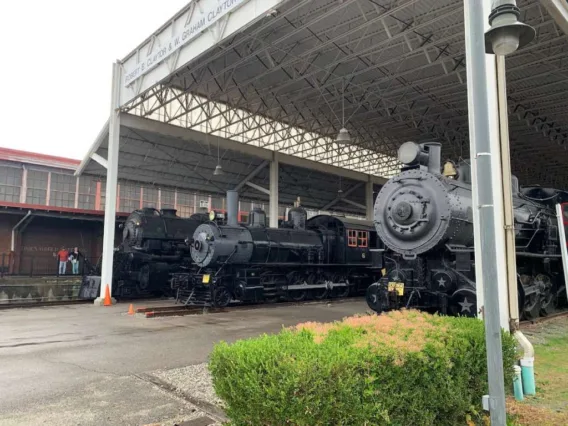
Of course, I’m talking about trains. And there are engines and rolling stock just about as far as the eye can see out back in the rail yard. The engines include some of the icons from the Norfolk and Western Railway — such as the N&W 2156.
Another engine with connections to the museum is the Norfolk and Western 611, lovingly called the “Spirit of Roanoke.” It’s the last of its class and has been returned to operation, providing seasonal recreational tours throughout the local countryside. I haven’t yet been able to hop aboard the “Queen of Steam,” but I hope to someday.
Further down the rail yard are several dozen pieces of rolling stock that include boxcars, tank cars, passenger cars, hoppers, and cabooses spanning the past dozen decades at least.
There is also a Norfolk & Western theatre car, where I saw a documentary about the resurrection of the famous N&W 611 engine.
Is The Virginia Museum Of Transportation Mostly For Kids Or Adults?
People are going to ask me — is the Virginia Museum of Transportation in Roanoke really a glorified children’s museum?
No, it’s not.
It’s absolutely a place you can take your whole family.
The depth of the collection, level of information, and diversity of exhibits will appeal to even the most seasoned of museumgoers, including myself — someone who has served as a freelance journalist on a transportation beat for a local news agency.
Many of the exhibits are clearly labeled “Do Not Touch,” including the classic cars and some of the other irreplaceable relics. Having said that, this is a wholly interactive museum — with many things for children and adults alike to touch, feel, and explore.
Among these are a vintage-1960s commuter plane, a caboose, and an engine that each welcome you inside for photo opps and the pure satisfaction of curiosity.
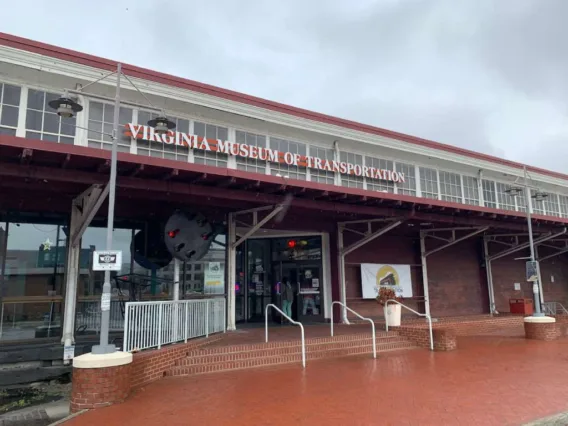
My Tips For Visiting The Virginia Museum Of Transportation
Here’s some personal advice… a few tips I recommend before visiting the Virginia Museum of Transportation:
- Allow plenty of time — I was quite amazed with how engaging this museum is. I spent much more time there than I expected to. What I thought would be a 2-hour visit turned into a 4-hour adventure! You may not spend as long here as I did, but plan on at least 90 minutes to 2 hours if you really want to do some exploring in this museum.
- Eat before you go — One thing this museum doesn’t have is a cafe or snack bar. I suggest grabbing a bite before you go, or save some room to enjoy one of the many great restaurants nearby — such as those at Roanoke City Market in downtown or cafes near Center in the Square.
- Get discounted admission — The transportation museum in Roanoke charges admission, but there are discounts available. When I went, children 2 years old and under were admitted FREE, while seniors 60 or older and students with a school ID were admitted for notable discounts. There were also 10% discounts for those in the military or people with memberships to AAA auto club, the National Railway Historical Society, and the N&W Historical Society. Check out their website to see what other discounts may be available, and don’t forget to ask if group rates apply for your visit!
- Check out all the history nearby — The museum is housed in the former Norfolk and Western Freight Station. It opened here in 1986 after a devastating flood ruined the former museum in 1985. But that’s not all there is to local rail history! A few blocks away, just steps from the grand Hotel Roanoke, is the O. Winston Link Museum, situated inside the former Norfolk and Western Railway passenger station. This place is like a micro version of the transportation museum — it’s filled with photographs, models, and relics of Roanoke’s rail history. It’s FREE and I highly suggest stopping by this place in conjunction with your visit to the Virginia Museum of Transportation.
Things To Do Nearby
In addition to visiting the Virginia Museum of Transportation in Roanoke, here are some other places that I’ve also visited nearby. I bet you’ll enjoy these places, too:
- Roanoke Starcade Arcade & Video Game Museum
- O. Winston Link Museum In Roanoke
- Roanoke Star On Mill Mountain
I’m a Florida native, a roller coaster junkie, and a frequent traveler. (Long road trips are my favorite.) Born and raised in Tampa, I grew up visiting Busch Gardens Tampa Bay. I authored the book Busch Gardens Tampa Bay: Images of Modern America, which details the colorful history of the Busch Gardens theme park. As a local historian, I’ve also written about other popular landmarks and attractions for a variety of publications. Here, on this Travel Guide, I like sharing little-known facts and fun stuff about all the places I’ve been — so you will have a good idea of what those places are like and what you should know before you go. I especially enjoy helping others plan fun trips… on a budget!


